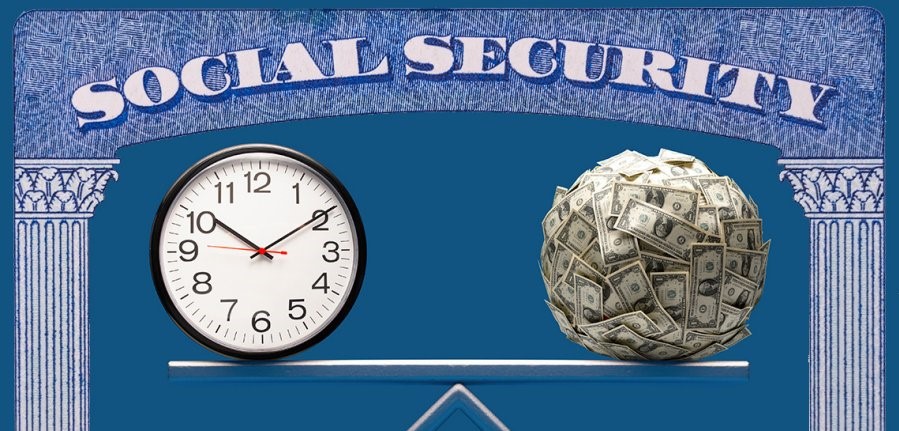When it comes to saving for retirement, maybe you’ve done everything right but will you need to generate income in retirement to fund your lifestyle? You started early, maxed out your 401(k) plan, invested in a diversified portfolio, and avoided costly mistakes, such as cashing out your retirement plan. Fantastic. But now comes the hard part: refining your decision-making to ensure you don’t outlive your money.
That’s a tall order for today’s retirees. Taxes, unpredictable investment returns, rising health care costs, and inflation down the road can significantly erode the value of your nest egg. And perhaps the biggest challenge is that you’ll probably need the money for a long time. A 65-year-old man has a life expectancy of 19.3 years; it’s 21.6 years for a 65-year old woman. If you’re married, there’s a 45% chance that one of you will live to age 90 and a nearly 20% chance that you or your spouse will live to 95.
Fortunately, there are steps you can take to generate extra income in retirement and extend the life of your portfolio.
-
Put Your Money in Buckets
A bear market just as you enter retirement couldn’t come at a worse time if you’re forced to sell securities after prices have plunged. Certainly, many investors today worry about how long the bull market can keep running. That’s where the “bucket system” can help. Basically, you divide your money among different kinds of investments based on when you’ll need it. Jason L. Smith, a financial adviser in West Lake, Ohio, and author of The Bucket Plan (Greenleaf Book Group Press) uses the system with clients, splitting their assets among three buckets: “Now,” “Soon” and “Later.”
The Now bucket holds the income in retirement you’ll need in the short term. Smith recommends setting aside enough so that, when added to Social Security or a pension, it will cover your basic expenses for up to a year. It should also have enough for major expenses that are likely to crop up over the next couple of years, such as paying for a new roof or that once-in-a-lifetime trip around the world, plus cash for unexpected emergencies.
Money in the Soon bucket will be your source of income for the next 10 years. Smith recommends investing in a fixed annuity (not an immediate annuity, which locks you into monthly payments) or high-quality short-term bonds or bond funds. As the Now bucket is depleted, you withdraw money from the annuity or sell some of the fixed-income investments in the Soon bucket to replenish it.
The assets in the Later bucket aren’t meant to be tapped for more than a decade into your retirement, so they may be invested more aggressively in stock funds, which provide greater growth potential, and alternative investments such as REITs. This bucket can also include life insurance or a deferred-income annuity, which pays income later in life. Consider selling securities in the Later bucket to replenish the Soon bucket starting about five years before it runs out of Copyright © 2017 The Kiplinger Washington Editors. All rights reserved. Distributed by Financial Media Exchange. money. If the market is in a downward spiral, you can wait, knowing you still have a few years before the Soon bucket will be empty.
TIP: Money you’ll need in the near term should be parked in a savings account. Yields on deposit accounts have been abysmal, and even though the Fed has been nudging rates higher, most banks haven’t passed on the increases to savers. Still, some are boosting rates. Yields on saving accounts requiring little or no minimum balance were recently 1.4% at Dollar Savings Direct, 1.35% at Live Oak Bank, and 1.3% at BankPurley and CIT Bank.
-
Manage Your Spending
To avoid running out of income in retirement, the standard rule has been to withdraw 4% from your nest egg in the first year of retirement and use the inflation rate as a guide to adjust withdrawals in subsequent years. For example, if you have $1 million, you can withdraw $40,000 in year one. If the inflation rate clocks in at 2% in year two, your withdrawal grows by 2%, to $40,800.
The 4% rule is based on historical market returns for a portfolio evenly split between stocks and bonds. But as the saying goes, past performance is no guarantee of future returns. Plus, the rule assumes you will live 30 years in retirement, so you might want to adjust the withdrawal rate up or down based on your life expectancy, says Judith Ward, a senior financial planner at T. Rowe Price.
Still, you should do just fine if you use the rule as a starting point for withdrawals. In fact, T. Rowe Price tested the 4% rule for a worker who retired in 2000 with a $500,000 portfolio (60% stocks, 40% bonds) and experienced two bear markets–the 47% drop in Standard & Poor’s 500-stock index in 2000-02 and the 55% drop in 2007-09. Though the retiree’s balance shrunk to about $300,000 by 2009–a 40% decline–the subsequent bull market helped restore the balance to $414,000 by the end of 2016.
TIP: Like any rule of thumb, the 4% rule won’t work for everyone or in every situation. You might need to reduce the withdrawal rate if you retire early or have a major expense, or if a market downdraft wipes out a chunk of your nest egg. Or you might increase it if your investments have appreciated more than expected, or you’ve spent less than you anticipated and have built up a sizable balance.
-
Protect Your Income in Retirement Against Inflation
The inflation rate has averaged 2.2% since 2000, and the Kiplinger forecast is for 1.3% inflation for 2017 and 1.9% for 2018. That seems tame, but don’t underestimate the power of even modest inflation, which can significantly erode purchasing power over time.
One way to make sure your nest egg keeps up with the cost of living is to remain invested in stocks. That can make for a bumpy ride over the short term, but over the long haul stocks’ steady upward trend makes them a go-to hedge against inflation. As measured by the S&P 500, stocks have returned an average annual rate of 10% for nine decades. Over the next decade, investors are more likely to see an average annual rate of 8% or even less–but even if inflation reverts to its long-term historical norm of a little over 3%, that return still provides a healthy cushion.
If you are near or just beginning retirement, advisers generally recommend a portfolio of up to 60% in stocks. But Michael Kitces, director of wealth management for Pinnacle Advisory Group in Columbia, Md., suggests that when stocks are highly valued (as they are now), investors should reduce their stock allocation to 30% at retirement. (If you’re using the bucket system, your 30% allocation to stocks goes in the Later bucket.) You can gradually increase your portfolio’s stock holdings to 60% or whatever amount meets your comfort level, he says.
Treasury inflation-protected securities, or TIPS, are another hedge against rising consumer prices. With these bonds, issued by Uncle Sam, your principal will be adjusted for inflation. In addition, you’re guaranteed a fixed rate of interest every six months, so as the principal rises, so does the amount of interest you’ll earn.
Ease the tax bite by holding securities in the right accounts. Income from bonds and bond funds are taxed at ordinary income tax rates and are best held in a tax-deferred account, such as an IRA. Stocks get favorable tax treatment in a taxable account; most dividends from stocks and stock funds, as well as long-term capital gains, are taxed at only a 15% or 20% tax rate. But make sure you keep some stocks in tax-deferred accounts to fight the effects of inflation over the long term.
TIP: You can buy TIPS straight from the federal government if you set up a TreasuryDirect account. That way, you won’t pay a commission to buy them, and you’ll avoid a management fee that comes with a TIPS fund. Plus, if you invest in TIPS directly, you’ll never get less than your original investment when the bonds reach maturity.
-
Earn Income in Retirement from Your Investments
If you need to boost your income in retirement to supplement Social Security and other sources of guaranteed income–or to generate cash while you wait for delayed benefits to supercharge your Social Security–dividend-paying stocks in a taxable portfolio should be high on your list. They can make up one-fourth to nearly one-half of your stock portfolio.
A number of blue-chip stocks have yields of 2.5% to 4. Look for companies with a record of regularly increasing dividends over time, which can serve as a hedge against inflation. But beware of chasing the highest yields. Outliers that boast yields of 7% or 8% may not generate enough profits to sustain those dividends.
As alternatives to individual stocks, consider exchange-traded funds and mutual funds that focus on investing in companies that pay dividends. Bonds are another key source of income. “You can make a huge difference in your income and your total return by properly managing the bond portion of your portfolio,” says Mari Adam, a certified financial planner with Adam Financial Associates, in Boca Raton, Fla.
The bond allocation for conservative investors near or at retirement is roughly 40% or more. Adam recommends that up to half of that be invested in a core bond or bond index fund consisting of U.S. government and high-quality corporate securities. Or, if you’re in the 28% or higher tax bracket, make municipal bonds your core holding, she says. The yields on munis issued by state and local governments tend to be lower than those of some other bonds, but you won’t owe federal taxes on the income.
Bond money can be spread among TIPS, high-yield bonds (also called junk bonds), international bonds, strategic bond funds, floating-rate bond funds, and preferred stocks. (Preferreds behave like bonds, paying out regular fixed payments.)
TIP: Real estate investment trusts, which own and manage properties such as offices, apartments, and shopping malls, must distribute at least 90% of their taxable income to shareholders. Plus, REITs are a hedge against inflation. You can invest in REITs through ETFs and mutual funds.
-
Delay Social Security Benefits
You might not think of Social Security as an inflation fighter, but for many people, it will be their only stream of income in retirement with an automatic cost-of-living adjustment. The COLA was only 0.3% for 2017, but it’s projected to be 2.2% in 2018. (When inflation was soaring in 1981, the COLA hit a record high of 14.3%.)
More than 45% of people take Social Security retirement benefits as early as they can, at age 62. For those who have taken early retirement, perhaps because of poor health, this often makes sense. But grabbing benefits early comes at a steep cost. If you claim Social Security at 62, your benefit will be reduced by as much as 30% compared with delaying until full retirement age (currently 66 but gradually rising to age 67). And if you’re patient and have other sources of income, you get a generous bonus for waiting until age 70 to claim benefits: For every year you wait to take Social Security beyond full retirement age until age 70, your benefit increases by 8%. Even better, future COLAs will be based on that bigger benefit.
TIP: Spouses should coordinate their claiming strategies to maximize the survivor benefit. A married couple is likely to maximize lifetime income from Social Security if the higher earner delays taking Social Security until age 70, so no matter who dies first, the survivor gets the largest possible benefit.
-
Earn Extra Income in Retirement
When Steve Cornelius retired in 2011 from his job as an executive for an industrial supply company in Atlanta, he moved to Minneapolis–no doubt passing other retirees who were headed in the opposite direction. “I can’t stand hot weather,” he says. Cornelius loves spending time outdoors and playing golf, but after a couple of years, he realized he needed something else to do during Minnesota’s long, cold winters. His solution: a part-time job with tax-preparation giant H&R Block.
Cornelius, 67, started working for Block in 2013 and has a growing roster of return clients. His hours are flexible, but he usually works 32 hours a week from January through April. During the rest of the year, he works about 10 hours a week providing clients with general tax-planning advice.
Cornelius says the income from his job will allow him to postpone claiming Social Security benefits until he’s 70. He’ll get a bump up of 8% for every year he delays taking benefits after his full retirement age of 66. “That’s going to give me security against inflation, which will rear its ugly head at some point,” Cornelius says.
The income has also enabled Cornelius to take trips he might not otherwise be able to afford. This fall, he and his partner, Robin, are taking a cruise through Southeast Asia, with stops in Hanoi, Ho Chi Minh City, Bangkok, and Singapore. “I’ve got a great retirement plan, but unless you’re Warren Buffett, you’re on a budget,” he says.
In addition to allowing you to delay taking Social Security, income from a part-time job can help cover your expenses during a market downturn, which means you won’t have to sell investments at a loss to pay the bills. Part-time and seasonal job opportunities run the gamut, from working as a park ranger to teaching English as a foreign language in another country. Freelancing is another way to earn extra cash. Freelance gigs range from online tutoring to consulting in your former profession. If you have a garage apartment or second home, you can earn income through home-sharing services, such as Airbnb.
TIP: If you’re receiving Social Security benefits and haven’t reached full retirement age–66 for most retirees–be mindful of the earnings test. In 2017, if you make more than $16,920, you’ll lose $1 in benefits for every $2 you earn over that amount. In the year you reach full retirement age, you’ll give up $1 for every $3 you earn over $44,880 before your birthday. Starting in the month you reach full retirement age, you can earn as much as you want without worrying about the earnings test. But the benefits aren’t lost forever. Once you reach full retirement age, your benefits will be adjusted to recover what was withheld. Still, if you’re planning on working after you retire, it makes sense either to keep your earnings below the limit or delay claiming benefits until you reach full retirement age.











